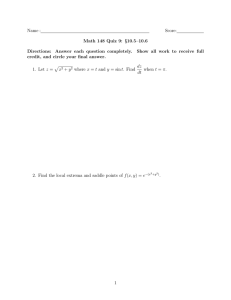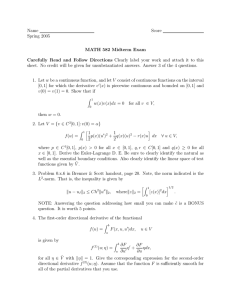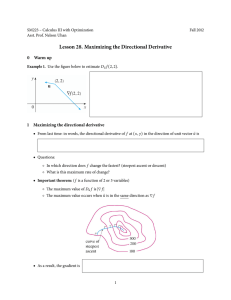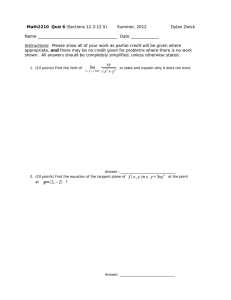PDF document
advertisement
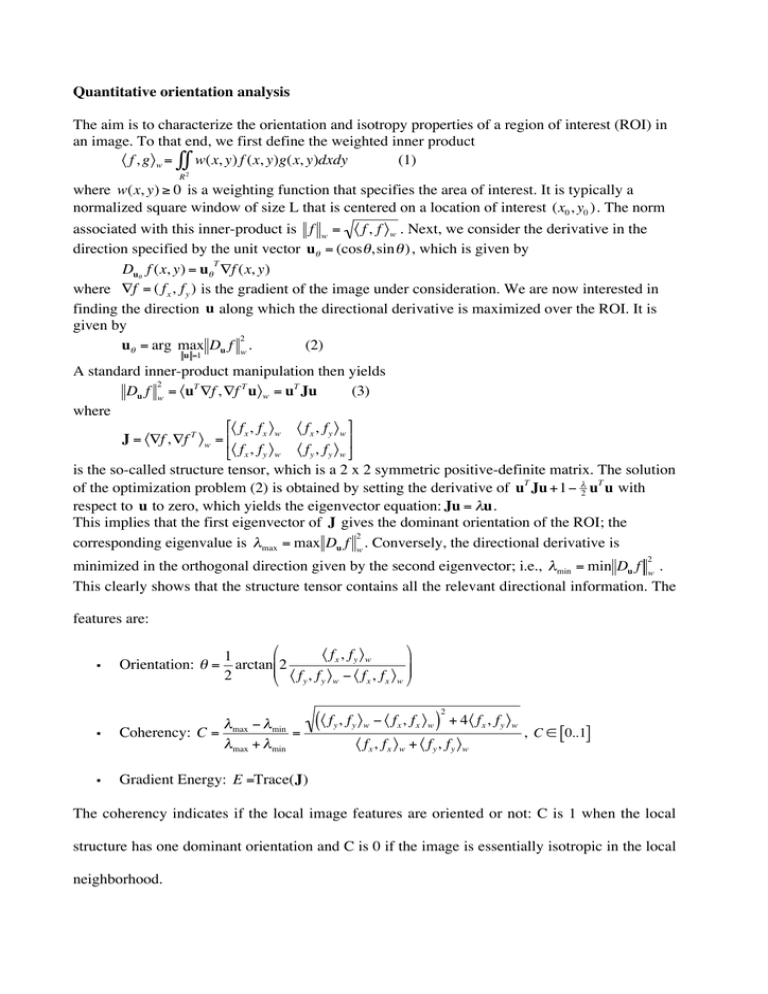
Quantitative orientation analysis The aim is to characterize the orientation and isotropy properties of a region of interest (ROI) in an image. To that end, we first define the weighted inner product (1) " f , g# w = $$ w(x, y) f (x, y)g(x, y)dxdy R2 where w(x, y) " 0 is a weighting function that specifies the area of interest. It is typically a normalized square window of size L that is centered on a location of interest (x0 , y0 ) . The norm ! associated with this inner-product is f w = " f , f # w . Next, we consider the derivative in the ! direction specified by the unit vector u" = (cos" ,sin " ) , which is given by T ! Du" f (x, y) = u" #f (x, y) where "f = ( f x , f y ) is the gradient of the image under consideration. We are now interested in ! finding the direction u along ! which the directional derivative is maximized over the ROI. It is given by ! 2 (2) u" = arg max Du f w . ! u =1 A standard! inner-product manipulation then yields Du f 2 w = "uT #f , #f T u$ w = uT Ju (3) ! where %" f x , f x $ w " f x , f y $ w ( J = "#f , #f T $ w = ' * &" f x , f y $ w " f y , f y $ w ) ! is the so-called structure tensor, which is a 2 x 2 symmetric positive-definite matrix. The solution of the optimization problem (2) is obtained by setting the derivative of uT Ju +1" #2 uT u with respect to u to zero, which yields the eigenvector equation: Ju = "u . ! This implies that the first eigenvector of J gives the dominant orientation of the ROI; the 2 corresponding eigenvalue is "max = max Du f w . Conversely, the directional derivative is ! 2 ! minimized in the orthogonal direction given by the ! second eigenvector; i.e., "min = min Du f w . ! This clearly shows that the structure tensor contains all the relevant directional information. The features are: ! ! ! & ) # fx , fy $w 1 Orientation: " = arctan((2 ++ 2 ' # fy , fy $w % # fx , fx $w * ! " # "min Coherency: C = max = ! "max + "min ! Gradient Energy: E =Trace(J) ($ f , f % y y w 2 # $ f x , f x % w ) + 4$ f x , f y % w $ fx , fx %w + $ fy , fy %w , C " [0..1] ! ! The coherency indicates if the local image features are oriented or not: C is 1 when the local ! dominant orientation and C is 0 if the image is essentially isotropic in the local structure has one neighborhood.
